Disclosure: This article contains affiliate links. We may earn a commission from purchases at no extra cost to you, which helps our travel content.
The Land Cruiser jolts to a stop as our guide Mutesa raises his hand. 'Simba,' he whispers, pointing toward a distant acacia tree. Through my binoculars, I spot them—three lionesses lounging in the golden grass, nearly invisible despite being just 50 meters away. This moment, after three decades of exploring natural wonders across continents, still manages to steal my breath. Queen Elizabeth National Park isn't just Uganda's most popular safari destination; it's a masterclass in biodiversity that rivals the more commercialized parks of East Africa. As someone who has guided Korean-American families through the Grand Canyon and led rafting expeditions down the Colorado, I can confidently say this: Uganda's premier wildlife sanctuary offers an adventure that speaks to both the soul of a naturalist and the heart of a cultural explorer. What makes this park truly exceptional isn't just the concentration of wildlife—over 95 mammal species and an astonishing 600 bird species—but the way the ecosystem intertwines with local communities and ancient traditions. This guide distills my week-long winter expedition into practical insights for couples seeking a meaningful adventure beyond the ordinary tourist experience.
Planning Your Queen Elizabeth Safari: Beyond the Basics
When I first considered Uganda for a safari, I'll admit my knowledge was limited to the gorilla trekking opportunities in Bwindi. Queen Elizabeth National Park wasn't even on my radar—an oversight I'm now embarrassed to confess. After extensive research and conversations with local guides, I realized this 764-square-mile sanctuary offers something increasingly rare in African safari circuits: authenticity without sacrificing accessibility.
The park sits along the Equator, straddling the districts of Kasese, Kamwenge, Bushenyi, and Rukungiri. Its diverse ecosystems range from sprawling savanna and wetlands to lowland forests and crater lakes formed by ancient volcanic activity. This geographical variety creates distinct sectors within the park, each offering unique wildlife viewing opportunities.
The Kasenyi Plains in the park's northeast section provide your best chance for lion sightings. These predators have developed a fascinating behavior—they climb fig trees to escape the midday heat and survey their hunting grounds. This tree-climbing adaptation isn't common among lions elsewhere in Africa.
The Ishasha Sector in the southern region is famous for its tree-climbing lions as well, but offers a completely different landscape and atmosphere from Kasenyi.
The Kazinga Channel, a natural waterway connecting Lake Edward and Lake George, hosts the highest concentration of hippos in Africa and serves as a magnet for elephants, especially during dry periods.
Before finalizing your itinerary, consider that the standard 3-day safari packages sold by most operators barely scratch the surface. I recommend a minimum of 5-7 days to properly experience the park's diverse sectors without rushing. My week-long winter expedition (December-February) coincided with the short dry season, offering excellent visibility and concentrated wildlife around water sources.
For navigation and wildlife identification, I relied heavily on my Garmin GPS and a comprehensive field guide. The satellite communicator function proved invaluable in areas with spotty cell coverage, allowing me to share real-time locations of exceptional sightings with fellow travelers.

💡 Pro Tips
- Book accommodations within the park for early morning game drives when predators are most active
- Hire a knowledgeable local guide with UWA certification rather than relying solely on a driver
- Bring US dollars in smaller denominations for tipping guides and unexpected expenses
Tracking the Kings of Kasenyi: Lion Encounters
My fascination with big cats dates back to childhood visits to the San Diego Zoo, but nothing compares to observing lions in their natural habitat. Queen Elizabeth's Kasenyi Plains offer one of Africa's most unique lion experiences, largely due to the pride's tree-climbing behavior—an adaptation believed to help them escape biting flies and scan for prey across the savanna.
Tracking lions here requires patience, strategy, and an early start. By 5:30 AM on our second day, we were already passing through the park gates, thermos of coffee in hand. The technical aspects of lion tracking in Kasenyi involve understanding their territorial patterns and hunting behaviors. Unlike the Serengeti, where massive prides dominate vast territories, Queen Elizabeth's lions form smaller family units that patrol relatively compact ranges.
Our guide Mutesa employed a systematic approach that I've since adopted for all wildlife tracking:
-
Start with intelligence gathering: Park rangers and guides communicate sightings via radio. Our first stop each morning was the ranger post for updates on recent lion movements.
-
Identify fresh tracks: Lion paw prints are distinctive—roughly 12cm wide for males and 10cm for females. Fresh tracks show clear pad marks and sharp edges.
-
Listen for alarm calls: Prey species like Uganda kob and waterbuck emit distinct warning calls when predators are nearby. These auditory clues often led us directly to lions.
-
Scan elevated positions: Unlike other safari destinations, Queen Elizabeth's lions spend up to 7 hours daily in trees, particularly fig trees and acacias with horizontal branches.
Our persistence paid off on day three when we located the Kasenyi pride—three females and seven cubs—sprawled across several fig trees near the lake shore. We maintained a respectful distance of about 30 meters, using my spotting scope to observe their behavior without disturbing them.
What struck me most was their relaxed demeanor despite our presence. Unlike some over-touristed safari destinations where vehicles crowd around sightings, we often had these magnificent cats entirely to ourselves. This exclusivity is partly why I recommend Queen Elizabeth for couples seeking intimate wildlife experiences—there's something profoundly connecting about sharing these moments with just your partner and guide, without dozens of other vehicles jostling for position.

💡 Pro Tips
- Position your vehicle downwind when tracking lions to prevent them from catching your scent
- Bring a good pair of binoculars with at least 10x42 magnification for tree-climbing lion spotting
- Always respect the minimum viewing distance of 20 meters that guides establish
Elephant Encounters Along the Kazinga Channel
After decades of exploring natural wonders across continents, few experiences compare to drifting along the Kazinga Channel while elephant herds converge at the water's edge. This 40-kilometer natural waterway connecting Lake Edward and Lake George forms the pulsing heart of Queen Elizabeth National Park's ecosystem.
The channel hosts over 30,000 hippos—believed to be the world's highest concentration—but it's the elephant encounters that left the deepest impression during my winter expedition. December through February marks a transition between wet and dry seasons, drawing massive elephant herds to the channel's reliable water source.
Rather than rushing through a standard two-hour boat cruise, I arranged a private launch with Uganda Wildlife Authority that allowed us extended time on the water. The technical aspects of elephant observation here differ significantly from land-based viewing. On water, you can approach much closer without disturbing these magnificent creatures, sometimes within 10-15 meters.
This proximity reveals behavioral nuances impossible to observe from vehicles. I watched matriarchs coordinate family drinking formations with subtle trunk movements, juveniles practice mud-bathing techniques under watchful eyes of aunts, and witnessed the complex social dynamics when separate family units converged at prime watering spots.
For photography enthusiasts, the channel offers unparalleled opportunities. The soft, reflected light bouncing off the water creates ideal conditions for capturing elephants in their natural behaviors. I recommend using a telephoto zoom lens that gives you flexibility as elephants move between shoreline and water. My 150-600mm range proved perfect for both wide environmental shots and intimate behavioral details.
Beyond elephants, the channel supports extraordinary biodiversity. During our five-hour cruise, we documented 47 bird species including the prehistoric-looking shoebill stork, African fish eagles, pied kingfishers, and massive flocks of great white pelicans. Buffalo herds numbering in the hundreds lined certain stretches of shoreline, while monitor lizards sunned themselves on partially submerged logs.
For couples seeking intimate wildlife experiences, I recommend booking the afternoon private boat rather than the morning group tour. Not only is the light more flattering for photography, but most tour groups opt for morning cruises, leaving the afternoon waters relatively uncrowded. Our captain, Joseph, expertly positioned the boat for optimal viewing angles while maintaining respectful distances from wildlife—a delicate balance that comes only with decades of experience navigating these waters.

💡 Pro Tips
- Book a private boat tour for greater flexibility in timing and positioning
- Bring polarizing filters for your camera to reduce glare from water
- Wear neutral colors and avoid bright clothing that might make wildlife wary
Cultural Immersion: The Human Story of Queen Elizabeth
As a community organizer who has spent decades bridging cultural divides, I've always believed that truly understanding a place means connecting with its people. Queen Elizabeth National Park exists not in isolation but within a complex tapestry of human communities whose histories are intertwined with the landscape.
The park borders eight districts and 11 sub-counties, home to diverse ethnic groups including the Basongora, Bakonzo, and Banyabindi peoples. These communities have traditional knowledge of the region's ecology that predates the park's 1954 establishment by centuries.
During my week-long expedition, I deliberately included cultural experiences that provided context for the conservation challenges and successes within the park. The Kikorongo Women Community near the park's eastern boundary offers immersive cultural performances and handicraft demonstrations that support local livelihoods while preserving traditional knowledge.
What struck me most was learning about the community-based conservation initiatives that have transformed former poachers into wildlife guardians. The Uganda Wildlife Authority has pioneered revenue-sharing programs that direct 20% of park entrance fees to surrounding communities, funding schools, health clinics, and sustainable agriculture projects.
For travelers seeking deeper understanding, I highly recommend the community walk in Nyanz'ibiri Cave Community just outside the park boundaries. Here, local guides led us through cave systems once used as shelters during historical conflicts, while explaining traditional medicinal plants and their applications. The three-hour walk concludes with a traditional meal and dance performance that feels authentic rather than staged for tourists.
As someone who has spent years helping Korean-American families connect with their heritage, I found parallels in how these communities balance tradition with modern conservation approaches. The Basongora people, traditionally pastoralists, have adapted their cattle-keeping practices to coexist with wildlife corridors while maintaining cultural identity.
To document these experiences, I relied on my field recorder to capture the stories and songs shared by community elders. These oral histories provide context impossible to find in guidebooks, revealing how human and natural histories are inseparable in understanding Queen Elizabeth's ecosystem.
For couples interested in meaningful engagement beyond wildlife viewing, I recommend spending at least one full day on cultural experiences. The Katwe Salt Lake community tour offers fascinating insights into traditional salt harvesting methods practiced for centuries, while the Leopard Village cultural center provides opportunities to learn traditional crafts like basket weaving and pottery.
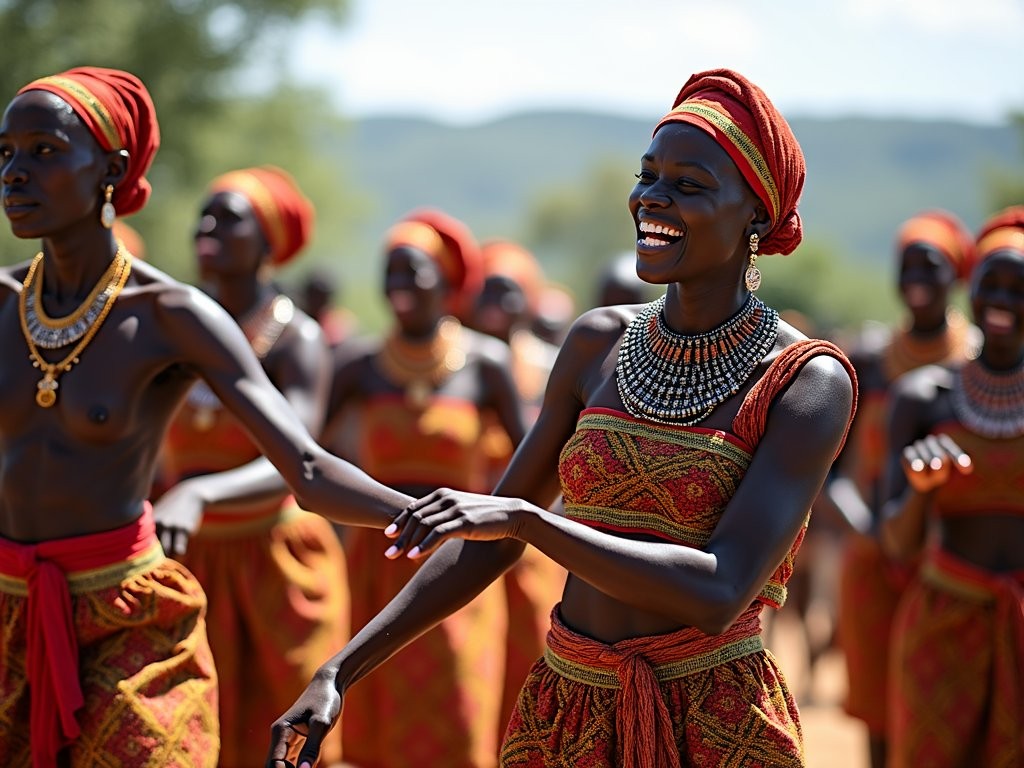
💡 Pro Tips
- Support community tourism initiatives by purchasing locally-made crafts directly from artisans
- Learn a few basic greeting phrases in Runyankore or Rukiga languages to connect with local communities
- Ask permission before photographing people or cultural ceremonies
Luxury Accommodations: Where to Stay for the Ultimate Safari Experience
After days spent tracking wildlife across dusty savanna, returning to exceptional accommodations transforms a great safari into an unforgettable one. Queen Elizabeth National Park offers a range of luxury lodges that blend seamlessly with their natural surroundings while providing world-class amenities.
During my winter expedition, I split my week between three distinctive properties, each offering unique perspectives on the park's diverse ecosystems. For couples seeking the perfect balance of adventure and comfort, these carefully selected accommodations enhance the safari experience without creating artificial barriers to nature.
Mweya Safari Lodge occupies a peninsula overlooking the Kazinga Channel, placing wildlife viewing opportunities quite literally on your doorstep. From my private veranda, I counted 27 hippos, 14 elephants, and countless waterfowl without ever leaving the property. The infinity pool creates the illusion of merging with the channel waters, while the open-air restaurant serves exceptional farm-to-table cuisine with ingredients sourced from local communities.
What impressed me most about Mweya wasn't just the luxury touches but their commitment to sustainability. Solar power provides 70% of the lodge's energy needs, water conservation systems recycle greywater for garden irrigation, and plastic usage has been nearly eliminated throughout the property.
For a more intimate experience, Kyambura Gorge Lodge offers eight elegantly appointed bandas (cottages) perched atop the escarpment overlooking Kyambura Gorge and Queen Elizabeth's savanna plains. This former coffee store and processing plant has been transformed into an eco-luxury retreat that supports gorge conservation initiatives. The property's design incorporates reclaimed materials and local craftsmanship, creating spaces that feel both sophisticated and authentically Ugandan.
The most exclusive option—and my personal recommendation for couples celebrating special occasions—is Ishasha Wilderness Camp in the park's southern sector. With just ten canvas-sided rooms nestled along the Ntungwe River, this property offers unparalleled privacy. What sets Ishasha apart is their commitment to immersive experiences; dinners are served under the stars, morning coffee is delivered to your tent at sunrise, and resident naturalists join guests for evening discussions around the campfire.
Regardless of which property you choose, I recommend packing a good sleep mask and earplugs. Even luxury accommodations in national parks maintain minimal barriers between guests and nature, meaning hippo grunts and elephant trumpets might become your midnight soundtrack.
For winter visits (December-February), request rooms with both fans and heating options. While daytime temperatures reach comfortable highs in the 80s°F (27-32°C), evenings can cool significantly, especially in elevated properties like Kyambura Gorge Lodge.

💡 Pro Tips
- Book accommodations at least 6 months in advance for peak winter season
- Request rooms facing east for spectacular sunrise views over the savanna
- Arrange private dinners in advance for special celebrations—most lodges offer memorable setups overlooking dramatic landscapes
Technical Safari Photography: Capturing Perfect Wildlife Moments
As someone who has documented adventures from Colorado's whitewater rapids to Thailand's limestone caves, I can confidently say that wildlife photography in Queen Elizabeth National Park presents unique technical challenges and extraordinary rewards. The park's diverse habitats—from open savanna to dense woodland and aquatic environments—require adaptable techniques and specialized equipment.
During my winter expedition, lighting conditions ranged from harsh midday sun to the golden glow of dawn and dusk. This variability demands both technical knowledge and proper equipment. For couples planning their safari, investing in or renting quality gear will significantly enhance your photographic memories.
Essential Equipment Considerations:
While smartphone cameras have improved dramatically, they still can't match the versatility of a proper camera system for safari photography. I relied primarily on a mirrorless camera with a telephoto zoom lens that allowed me to capture intimate wildlife portraits without disturbing natural behaviors. This focal length proved ideal for tree-climbing lions and distant elephant herds alike.
For couples sharing photography duties, consider bringing complementary setups—perhaps one telephoto setup and one wider-angle system to capture environmental contexts. A sturdy bean bag provides essential stability when shooting from vehicles, as traditional tripods are impractical during game drives.
Technical Settings for Safari Success:
Queen Elizabeth's wildlife moves quickly and unpredictably. For lion tracking, I maintained shutter speeds of at least 1/1000 second to freeze action, increasing to 1/2000 or faster when photographing birds in flight along the Kazinga Channel. Auto-ISO with appropriate upper limits (I set mine to 6400) allows you to maintain these critical shutter speeds as lighting conditions change.
Continuous autofocus with animal eye detection (available on most recent camera models) dramatically improves keeper rates when following moving subjects. I configured back-button focusing to maintain focus on wildlife while recomposing for better compositions.
Composition Beyond Documentation:
The difference between a snapshot and a compelling wildlife image often lies in composition and storytelling. Rather than simply documenting an animal's presence, I look for behavioral moments that reveal something about their character or ecology. When photographing elephants along the Kazinga Channel, I deliberately included their reflections in the water and waited for trunk interactions between family members.
Environmental context elevates wildlife images from mere documentation to storytelling. Including elements of Queen Elizabeth's distinctive landscapes—the Rwenzori Mountains backdrop, acacia-dotted savanna, or dramatic cloud formations—provides sense of place that generic close-ups lack.
Ethical Considerations:
Responsible wildlife photography means prioritizing animal welfare above getting the shot. Our guides established appropriate viewing distances based on each species' sensitivity and behavior. When photographing the tree-climbing lions of Ishasha, we maintained greater distance from trees containing cubs, using longer focal lengths rather than approaching closer.
For cultural photography in surrounding communities, always seek permission before photographing people, and consider printing and sending back images to subjects when possible—a practice I've maintained throughout my travel career.
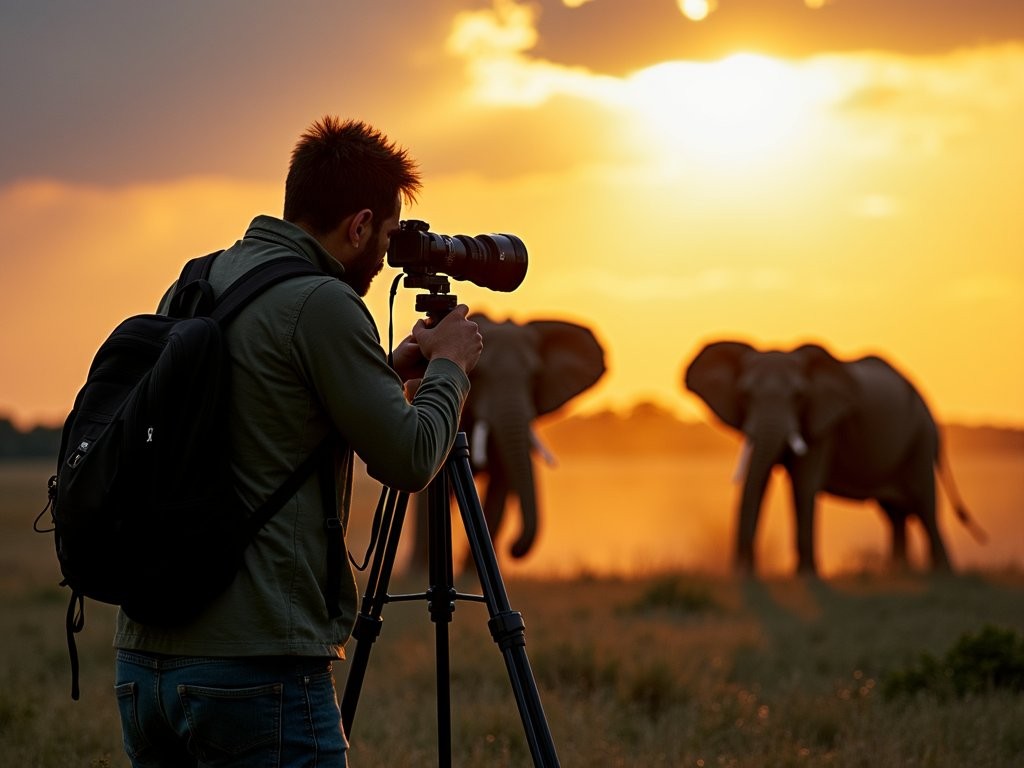
💡 Pro Tips
- Set up custom shooting modes on your camera for quick transitions between stationary wildlife and action sequences
- Photograph during the golden hours (first and last hour of daylight) when possible for warm, directional lighting
- Bring twice as many memory cards and batteries as you think you'll need—charging opportunities may be limited
Final Thoughts
As our Land Cruiser climbs the final ridge before exiting Queen Elizabeth National Park, I ask our driver to stop for one last panoramic view. The vastness of this ecosystem—from the shimmering waters of the Kazinga Channel to the distant silhouettes of the Rwenzori Mountains—defies easy description. What makes this park extraordinary isn't just the concentration of wildlife or the diversity of landscapes, but how these elements intertwine with human communities whose stories are inseparable from the land. For couples seeking adventure beyond the ordinary safari experience, Queen Elizabeth offers rare intimacy with nature that more commercialized destinations have lost. Whether tracking tree-climbing lions through morning mist or watching elephant families navigate ancient migration routes, these shared moments create connections not just with wildlife but with each other. As someone who has spent decades exploring natural wonders across continents, I can offer this certainty: the memories you create in Uganda's premier wildlife sanctuary will continue revealing their depth long after you've returned home.
✨ Key Takeaways
- Plan at least 5-7 days to properly experience all sectors of the park without rushing
- Winter visits (December-February) offer excellent wildlife viewing with fewer crowds than peak season
- Combine wildlife experiences with cultural immersion for a more meaningful understanding of conservation challenges
- The tree-climbing lions and Kazinga Channel elephant concentrations are unique highlights that distinguish Queen Elizabeth from other African safari destinations
📋 Practical Information
Best Time to Visit
December-February (short dry season) and June-September (long dry season)
Budget Estimate
$4,500-7,000 per person for 7-day luxury safari experience including accommodations, private guide, and activities
Recommended Duration
5-7 days minimum to experience all sectors of the park
Difficulty Level
Moderate (Requires Good Mobility For Getting In/out Of Safari Vehicles And Boats)


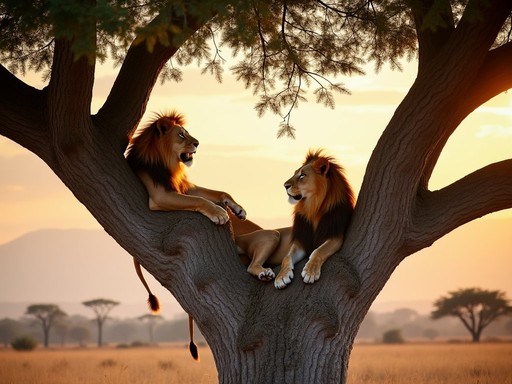



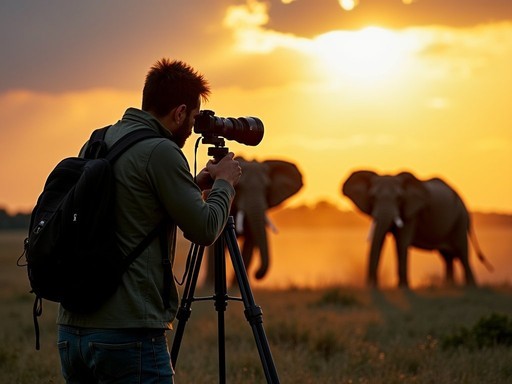


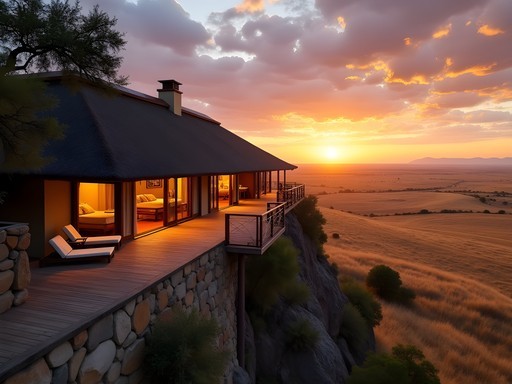
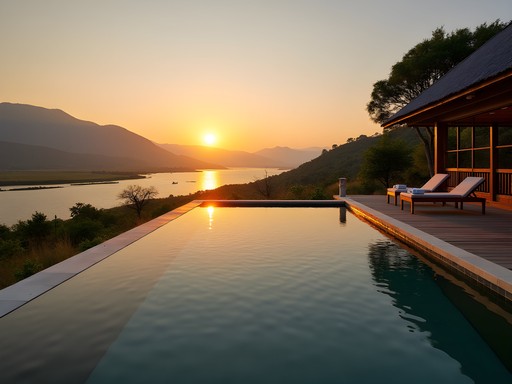






Comments
Kimberly Murphy
Stephen, your post brought back so many memories! The elephant encounters along the Kazinga Channel were the highlight of my Uganda trip. For anyone planning to visit, I highly recommend staying at Mweya Safari Lodge - watching elephants and hippos from the pool is an experience you'll never forget. Also, don't miss the chimps in Kyambura Gorge! They're harder to spot than the lions but absolutely worth the effort. The gorge itself is stunning - like a little slice of rainforest hidden in the savanna.
vacationone
This looks incredible! Is Queen Elizabeth doable for someone who's never been to Africa before? What about safety and malaria?
Kimberly Murphy
Absolutely doable for first-timers! Uganda is quite visitor-friendly. Queen Elizabeth is well-established with good infrastructure. Take normal precautions - malaria prophylaxis, insect repellent (I use repellent), and book with a reputable tour operator. The guides are excellent and really make the experience special. Feel free to DM me if you want specific recommendations!
vacationone
Thanks so much! That's really helpful. Will definitely check out that repellent.
Gregory Boyd
Great write-up Stephen! I was in Queen Elizabeth last year and can confirm that the Kazinga Channel boat safari is absolutely unmissable. We saw over 50 elephants in one afternoon. One tip I'd add - if you're serious about lion tracking, spend at least 3 days in the park. The Kasenyi Plains can be hit or miss depending on prey movements, but persistence pays off. Also, the tree-climbing lions in the Ishasha sector are worth the extra drive if you have time.
wildlife
Did you manage to see the tree-climbing lions? We spent a whole day in Ishasha and didn't spot any!
Gregory Boyd
We got lucky! Found two females in a fig tree around 3pm. Our guide said morning and late afternoon are best, and you need patience. Sometimes they stay in the grasslands for days.
roamnomad
Those lion pics are AMAZING! Queen Elizabeth has been on my bucket list for years. Finally heading there this December!
travelbug22
Love the cultural immersion section! Often overlooked in safari blogs.
wildlifephotog
Just got back from QE last month! If you're into photography, the Kazinga Channel boat tour is unmissable - bring a zoom lens and shoot in the golden hour. The elephants come right down to the water's edge!
camerahobbyist
What lens did you use? I'm bringing my 70-200mm but wondering if I need more reach.
wildlifephotog
I used a 100-400mm and it was perfect. The 70-200mm will work for elephants by the water but might be limiting for distant wildlife. The boats get pretty close though!
safari_dreamer
Planning to visit in November. Is that a good time? Any tips for finding a reliable guide like your Mutesa?
Stephen Martin
November is great - start of the short rainy season but the landscape is lush and wildlife is abundant. For guides, I booked through Queen's Expeditions in Kampala - ask specifically for Mutesa if he's available. He's been guiding for 15+ years!
Timothy Jenkins
Brilliant write-up, Stephen! I visited Queen Elizabeth last year and had a similar experience with the lions in Kasenyi. The tree-climbing lions in the Ishasha sector were a highlight too - did you manage to spot any? I found the balance between wildlife viewing and cultural experiences really made this park special. The boat safari along the Kazinga Channel was absolutely teeming with elephants and hippos. I'd recommend visitors bring a decent pair of binoculars - my Nikon Monarch 5 were perfect for spotting wildlife at distance. When did you find was the best time of day for lion sightings?
Stephen Martin
Thanks Timothy! We did see the tree-climbing lions - absolutely magical experience. For lion sightings, early morning (5:30-8:00am) was consistently best. The guides told us they're most active before the heat sets in. Did you stay at Mweya Safari Lodge or somewhere else?
Timothy Jenkins
We split our time between Mweya and a small tented camp near Ishasha. The sunrise views from Mweya over the channel were spectacular! Completely agree about those early mornings - worth every yawn.
photoblogger1180
Stephen, your lion photography is outstanding! What lens setup were you using? I'm heading to Uganda in November and trying to decide what gear to bring. I've done safaris in Kenya and Tanzania but heard the lighting can be different in Queen Elizabeth with more forest cover in some areas. Any photography tips specific to this park? I'm particularly hoping to capture those epic elephant-crossing-the-channel moments you described!
Stephen Martin
Thanks! I was using a 100-400mm on most shots. You're right about the lighting - it's more variable with patches of forest. For the channel crossings, I'd recommend positioning yourself on the western side in late afternoon for best light on the elephants. The boat guides know the best spots!
photoblogger1180
Perfect advice, thanks! Can't wait to capture those moments.
sunsetwanderer
Those lion photos are incredible! Did you really get that close?
Stephen Martin
Thanks! Our guide Mutesa knew exactly where to position us. We were about 30 meters away using a telephoto lens.
sunsetwanderer
Amazing! I need to add this to my bucket list.
Venture X
Premium card with 2X miles, $300 travel credit, Priority Pass